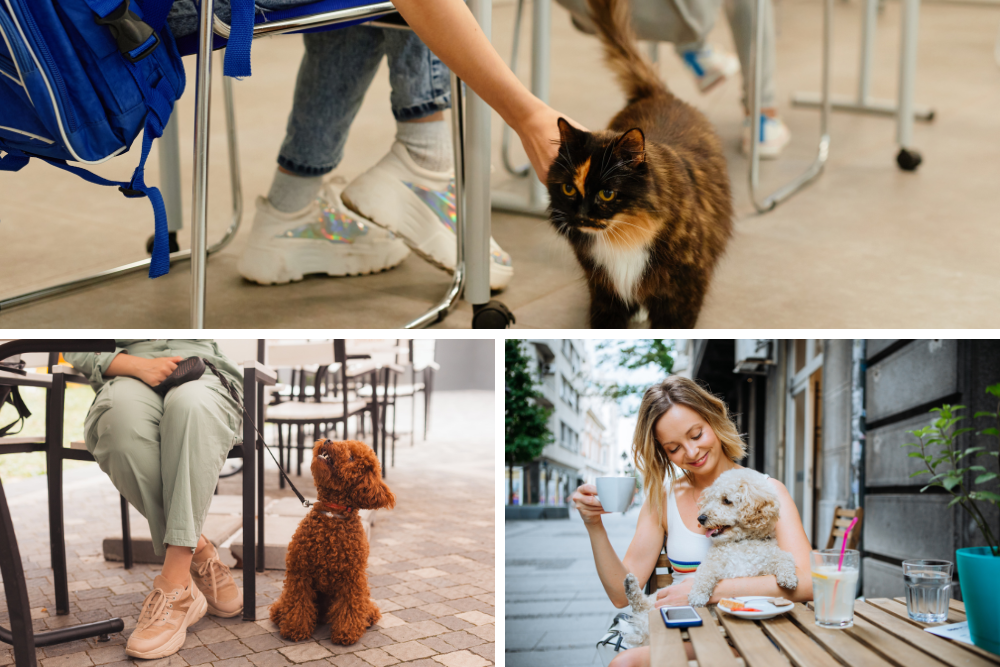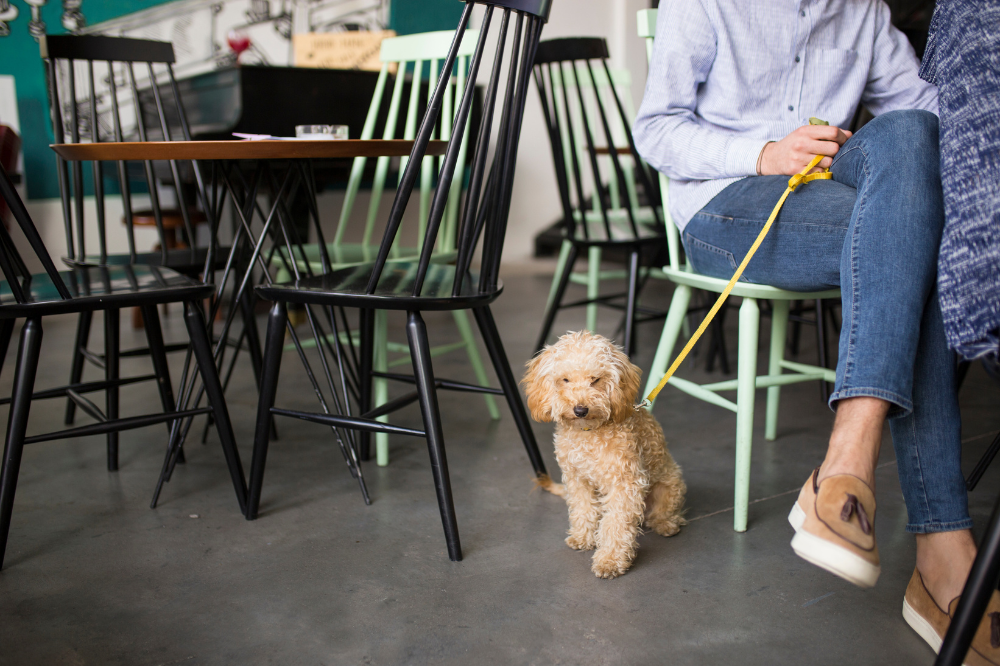The trend of pet ownership has surged, leading to a growing need for pet-friendly restaurants. To run such a venue, meticulous planning, preparation, and attention to detail are essential. This guide provides a comprehensive blueprint for creating and managing a successful pet-friendly restaurant business.
There’s a rising demand for pet-friendly restaurants among pet owners. Establishing clear pet policies boosts customer awareness. Essential communication methods include online sources and in-store notices. Regular cleaning and sanitization, particularly on floors, tables, and chairs, are vital for maintaining a clean environment.
Offering amenities like water bowls, snacks, and waste disposal stations can significantly enhance the experience for pets and their owners. Training staff on pet handling and behavior ensures a smoother operation, guaranteeing a positive experience for all guests. Partnering with pet service providers can offer additional convenience to pet owners, potentially drawing in more customers.
Establish Clear Guidelines for Pets

Creating a pet-friendly restaurant requires setting clear guidelines and policies. This ensures a safe, comfortable environment for both humans and pets. Start by defining your pet policies, and deciding which areas are pet-friendly, like outdoor patios or certain indoor spots. Display these policies on your website, social media, and at the entrance.
Define Your Restaurant’s Pet Policies
Clearly state the types of pets allowed, any size or breed restrictions, and what leashes, carriers, or other containment methods are required. Communicate these policies to customers to avoid misunderstandings and issues during their visit.
Outline Rules for Pet Behavior
- Require pets to be well-behaved and always under their owners’ control.
- Establish guidelines for pet waste cleanup, including the provision of readily available pet waste disposal stations.
- Prohibit disruptive pet behavior, such as excessive barking, jumping on furniture, or aggressive actions, to maintain a peaceful dining experience for all customers.
- Consider designating separate dining areas for pet owners and non-pet owners to cater to the preferences of all guests.
By setting clear guidelines and communicating them effectively, you can create a welcoming, harmonious pet-friendly environment. This satisfies the needs of pet owners and those who prefer a pet-free dining experience.
Maintain a Clean and Safe Environment
Creating a pet-friendly restaurant requires a strong focus on cleanliness and sanitation. It’s crucial to ensure both human and canine guests feel welcome. Regular cleaning and sanitization of floors, tables, and chairs are essential. The outdoor dining area must be kept immaculate, with any pet waste or fluid contamination promptly sanitized.
Regular Cleaning and Sanitization
Develop a detailed cleaning schedule that targets high-traffic zones and potential contamination sources. Train staff to thoroughly clean surfaces, mop floors, and sanitize the area. This maintains top-notch cleanliness in pet-friendly restaurants. Use eco-friendly products that are safe for pets and people.
Pet Waste Disposal Stations
- Install pet waste disposal stations in the outdoor dining area for easy pet waste disposal.
- Keep disposal stations well-supplied with waste bags or sacks and ensure bins are marked and accessible.
- Display signs that highlight the importance of pet waste management to encourage cleanliness.
Train and Educate Staff
Ensuring your staff is well-trained and at ease with pet-related issues is key to a welcoming pet-friendly restaurant atmosphere. Offer comprehensive pet awareness training that includes breed identification, understanding pet behaviors, and emergency protocols. This training equips your team to offer a warm, attentive experience for both humans and pets.
Pet Awareness Training
Teach your staff the fundamentals of pet etiquette and behavior. Discuss topics such as:
- Recognizing different pet breeds and their characteristics
- Understanding common pet behaviors, such as body language and vocalizations
- Identifying potential triggers or stressors for pets in a restaurant setting
- Effectively communicating with pet owners to address any concerns or questions
This training will give your team the knowledge and confidence to manage pet-related situations professionally.
Handling Emergencies or Allergies
It’s crucial to train your staff on handling pet emergencies or allergic reactions. Ensure they know the right protocols, such as:
- Recognizing signs of distress or allergic reactions in pets
- Knowing the location and proper use of first-aid kits and emergency contact information
- Maintaining a list of nearby veterinary clinics or animal hospitals for referrals
- Handling pet waste and sanitizing areas to keep the environment clean and safe
By providing your staff with the right knowledge and skills, you ensure they’re ready to manage any pet-related incidents or emergencies in your restaurant.
Provide Pet-Friendly Amenities
To truly welcome pet owners, offering a variety of pet-friendly amenities is crucial. Ensure comfort and well-being by providing fresh water bowls and safe, nutritious snacks for pets. Supplying doggie bags or sacks for proper waste disposal shows your dedication to cleanliness.
Enhance the pet-friendly experience by working with local pet businesses. Consider offering pet grooming, sitting, or a retail section with pet supplies. These partnerships boost the overall experience and highlight your support for the pet community.
Water Bowls and Pet Snacks
Quench the thirst of your furry friends with clean, fresh water bowls in your outdoor dining areas. Pair this with pet-safe snacks to ensure your four-legged guests feel pampered, just like their human counterparts.
Doggie Bags or Sacks
Provide doggie bags or sacks for easy waste disposal to make cleanup a breeze for pet owners. This thoughtful amenity shows your dedication to a clean, hygienic environment for all guests, including pets.
Collaborate with Local Pet Businesses
Partner with local pet businesses to offer more services and amenities. Consider on-site pet grooming, sitting, or retail options. These collaborations can significantly enhance the pet-friendly experience, meeting the diverse needs of your patrons and their pets.
By incorporating these pet-friendly amenities and collaborating with local businesses, you’ll make your restaurant a welcoming spot for pet owners and their pets. This approach solidifies your reputation as a family-friendly destination.
Pet-Friendly Restaurant

Starting a pet-friendly restaurant can be both fulfilling and financially rewarding for establishments aiming to meet the increasing need for dog-friendly dining. By setting clear rules, keeping the place clean and safe, training staff, and offering pet-friendly amenities, restaurants can turn their spaces into welcoming spots for humans and their pets.
In recent years, cities like Houston have led the way with initiatives like the Paws on Patios ordinance. This has spawned numerous venues that welcome dogs, such as Kirby Ice House, Decant Urban Winery, Cottonwood, and Heights Bier Garten. These places feature outdoor seating, dog parks, and menus tailored for pets.
Outside of Texas, other areas have also become pet-friendly hotspots. Asbury Park in New Jersey stands out with its variety of restaurants that welcome pets, from intimate coffee shops to beachfront spots. Places like Asbury Park Roastery, The Asbury Hotel, and Playa Bowls offer menus for humans and dogs, water bowls, and areas for pets to play.
By creating a welcoming atmosphere, offering pet-friendly amenities, and meeting the needs of both human and canine guests, pet-friendly restaurants can build a dedicated customer base. They can also benefit from the growing interest in dog-friendly dining.
Create a Welcoming Environment
Creating a pet-friendly restaurant goes beyond just accommodating pets. It’s about making a space that welcomes both pet owners and those without pets. Focus on adding features that meet the needs of pets while ensuring a comfortable and enjoyable experience for everyone.
Covered Outdoor Spaces
Offer shaded outdoor seating for pet owners to enjoy meals with their pets. These areas shield pets from the sun and rain, making dining out pleasant for all. Use awnings, pergolas, or canopies to make the space cozy and inviting.
Pet-Friendly Seating
Design seating that suits pets and their owners. Large booths or pet-friendly tables give pets enough room to sit with their humans. Also, consider using outdoor furniture like sturdy benches or chairs that fit both humans and pets.
Pet-Friendly Decor
Add decor and artwork that welcomes pets to your restaurant. Hang pet-themed paintings or photos, or display sculptures that celebrate pets. These elements make your place feel more welcoming to pet owners.
| Key Considerations for Creating a Welcoming Environment | Benefits |
|---|---|
| Covered outdoor seating areas | Protects pets from the elements, and provides a comfortable dining experience |
| Pet-friendly seating options | Accommodates pets and their owners, enhances the overall dining experience |
| Pet-themed decor and artwork | Creates a warm and inviting atmosphere, celebrates the presence of pets |
By focusing on creating a welcoming space for pets and their owners, you can offer a unique dining experience. This approach boosts customer satisfaction and makes your restaurant stand out in the competitive market.
Advertise and Promote
To draw in a dedicated customer base of pet owners, it’s crucial to advertise and promote your pet-friendly restaurant effectively. Use social media to share engaging photos and videos of pets enjoying your venue. Work with local pet influencers or groups to expand your reach and highlight your pet-friendly services.
Utilize Social Media Marketing
Being active on platforms like Instagram and Facebook can significantly boost your pet-friendly restaurant’s promotion. Post images and videos that capture the special pet-friendly experience you provide. Ask your customers to post their photos with a branded hashtag, spreading the word about your welcoming atmosphere.
Collaborate with Pet Influencers
Teaming up with local pet influencers or pet-focused social media accounts is a smart marketing move. These influencers have a large audience of pet enthusiasts who value their advice. Invite them for a free visit, and ask them to share their good experiences with their followers. This approach can introduce you to new customers and build trust through social proof.
Host Pet-Related Events and Campaigns
Plan pet-themed events or campaigns to connect with the local pet community and show your commitment to welcoming pets. Events like “yappy hours,” pet trivia nights, or dog-friendly fundraisers can draw in new customers and foster a loyal pet owner base. These activities show your dedication to a pet-friendly environment.
Through strategic social media, influencer partnerships, and pet-themed events, you can draw a consistent flow of customers eager to dine with their pets.
Develop a Pawfect Menu
Creating a pet-friendly menu for your restaurant requires collaboration with veterinarians. Their knowledge ensures the ingredients are safe and suitable for pets. It’s essential to design a menu that meets pets’ dietary needs and preferences while considering allergies and restrictions.
Consult Veterinarians
Consulting with local veterinarians offers crucial insights into pets’ nutritional needs and health concerns. Work with them to craft a menu that focuses on the well-being of your canine and feline guests. Discuss common pet food ingredients, allergens, and safe preparation methods to ensure a pet-friendly menu.
Cross-Marketing with Local Vets
Explore cross-marketing opportunities with local veterinary clinics to boost your pet-friendly restaurant menu. This could mean featuring their logo and contact details on your menu or offering discounts to their clients. By working with veterinarians, you can connect with a network of pet owners and establish a reputation as a pet-friendly restaurant that values the health and safety of pets.
| Menu Item | Ingredients | Health Benefits |
|---|---|---|
| Pup Patties | Ground turkey, sweet potatoes, brown rice, carrots, spinach | High in protein, fiber, and essential vitamins and minerals for dogs |
| Furry Fries | Dehydrated sweet potato slices, parsley, coconut oil | Rich in antioxidants, fiber, and healthy fats for canine health |
| Puppuccino | Whipped cream, bone broth | Provides hydration and a special treat for dogs |
Train Staff in Puppy-Service Etiquette

Creating a pet-friendly atmosphere in your restaurant requires educating your staff on the proper etiquette for serving customers with service dogs and domestic pets. It’s essential to understand the differences between service animals and regular pets. This knowledge ensures a seamless and inclusive dining experience for everyone.
Understand Service Dogs vs. Domestic Pets
The Americans with Disabilities Act (ADA) defines service animals as dogs and miniature horses, trained to perform tasks for individuals with disabilities. Emotional support animals, therapy dogs, and companion pets lack the public access rights of service animals.
Seating Arrangements for Dogs
When accommodating customers with service dogs or well-behaved domestic pets, consider appropriate seating arrangements. Separate dogs by size and temperament to prevent conflicts. Service animals must have access to all areas of the restaurant, as per ADA regulations.
Cleaning Up Messes
Having pets in a dining establishment may lead to messes. Train your staff on efficient cleanup procedures to maintain cleanliness. Provide pet waste bags and disinfectants to address any issues promptly and professionally.
| Key Differences Between Service Dogs and Domestic Pets | Service Dogs | Domestic Pets |
|---|---|---|
| Public Access Rights | Granted access to all public areas and privately owned businesses open to paying customers | May be restricted from certain establishments, depending on the venue’s pet policies |
| Identification Requirements | No mandatory certification or identification required by federal law | May require proof of vaccinations or other documentation |
| Behavioral Expectations | Must be well-behaved and not pose a risk to customers or staff | Must be well-trained and obedient to ensure a positive dining experience |
Equipping your staff with the knowledge and skills to handle service animals and domestic pets professionally and compassionately creates a welcoming environment. This approach ensures a positive experience for all customers and their pets.
Conclusion
Transforming your restaurant into a pet-friendly haven is achievable with the right strategies. Start by setting clear pet policies and ensuring a clean, safe space. Train your staff to handle pets with care and provide amenities that cater to pets. A warm ambiance and effective marketing can make your establishment a top choice for pet owners.
By following these steps, you can meet the rising demand for pet-friendly dining. Your dedication to pets will make your restaurant a favorite spot for both humans and their pets. This approach ensures a welcoming environment for all.
The key to a successful pet-friendly restaurant is outlined in this article. It’s about creating a safe, clean space for humans and animals alike. Define pet policies, train staff, offer pet amenities, and promote your place as a pet-friendly spot. This strategy can help you tap into the growing trend of pet-inclusive dining, making your restaurant a community hub.
Places like The Exchange in Asheville, North Carolina, show the success of pet-friendly restaurants. By catering to pets and their owners, these establishments stand out. They build a loyal customer base and contribute to a more inclusive dining scene. The key to success is balancing pet accommodations with the comfort of all guests as the pet-friendly trend continues to grow.
FAQ’s
What are the key considerations when defining a pet-friendly restaurant’s policies?
When setting pet policies, specify which areas welcome pets, like outdoor patios or certain indoor spots. Detail rules for pet behavior, like leash use and clean-up expectations. This ensures a safe, comfortable space for everyone.
How can pet-friendly restaurants ensure a clean and secure environment?
Regularly clean and sanitize areas pets frequently, focusing on floors, tables, and chairs. Install pet waste stations to encourage owners to clean up. Clear pet behavior rules, like leash mandates, help prevent disruptions.
What kind of staff training is recommended for a pet-friendly restaurant?
Train staff on pet awareness, covering breed identification, common behaviors, and emergency protocols. This prepares them to offer a warm welcome to pets and their owners.
What pet-friendly amenities should a restaurant offer?
Provide fresh water bowls and safe snacks for pets. Offer doggie bags for waste disposal. Partner with local pet services, like grooming or sitting, to add convenience for guests.
How can pet-friendly restaurants create a welcoming environment for both pet owners and non-pet owners?
Design spaces with pets in mind by offering covered areas and pet-friendly seating. Incorporate decor that appeals to pets and their owners, creating a cozy atmosphere.
How can pet-friendly restaurants effectively advertise and promote their services?
Use social media to share pet photos and videos. Collaborate with pet influencers and groups. Host pet events to draw in the pet-loving community and highlight your welcoming nature.
What considerations should be made when developing a menu for a pet-friendly restaurant?
Consult with vets to ensure pet-safe ingredients. Offer a menu that meets pets’ dietary needs and avoids allergies. Partner with local vet clinics for cross-promotions and discounts.
